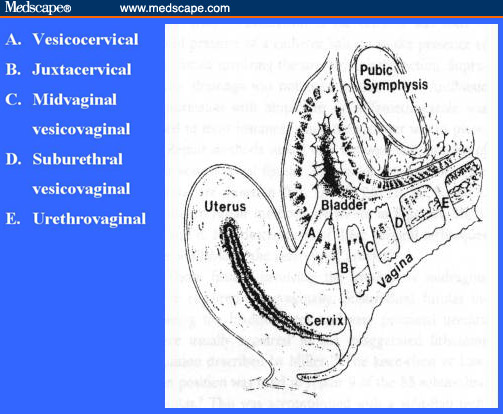What is an obstetric fistula?
This disorder is a hole between the birth canal and the anus. It is most often caused by labor being prolonged for too long prior to delivery of a baby. When the unborn infant remains in the birth canal too long, it places too much pressure on the mother’s internal vaginal wall cutting off circulation and tearing the wall. This condition leads to incontinence of urine and feces, and other medical issues for the mother. (See Figure 1) If labor is left for too long; the infant, the mother or both could die from this condition.
Obstetric fistula affects up to 100,000 women every year and is a large cause of death during childbirth for mothers and infants. It is very prevalent in third world nations that do not have proper access to medical care for the prenatal period and delivery of infants.
Certain programs are working hard to fund medical and prenatal care for pregnant women and aid in the prevention of this serious complication of pregnancy and childbirth.
Figure 1: Obstetrical Fistula
Courtesy of Medscape.com
Causes of Obstetric Fistula
The main cause of obstetric fistula is a prolonged, obstructed and unaided labor. The baby’s head places too much pressure on the interior of the vagina and blocks the blood flow, weakening the tissue. If labor goes unaided, the baby’s head can tear the wall and this further stalls the progression of labor and delivery of the baby. If left too long, the baby can die during the birth process, as well as the mother.
Underlying this cause is lack of medical care during pregnancy and childbirth, home births and poverty. Nutrition tends to be another underlying cause in countries where inadequate nutrition leads to poor skeletal development in females, which causes the pelvic region to be malformed or too small for childbirth. Without physicians to intervene and perform assistance or C-Sections, fistula’s can develop and cause severe complications or even death.
Symptoms of Obstetric Fistula
The symptoms of obstetric fistula generally follow the actual injury that occurs during prolonged childbirth and include:
- Hole between the vagina and rectum
- Further prolonged labor (baby’s head gets caught up in the tear)
- Fetal or maternal death during labor
- Incontinence of urine and/or feces
- Foul Odor
- Infertility
- Nerve damage/paralysis
- Infection
- Sexual dysfunction
- Social Isolation
The unpleasant symptoms of obstetrical fistula can lead to isolation of the female from her family, her job and even lead to divorce from her husband. One of the main issues, secondary infertility may render the woman useless in many cultures since can no longer bear children. Socially, the foul odor will cause others to “shun†the woman and prevent her from attending any public events.
How is obstetrical fistula diagnosed?
The diagnosis of obstetrical fistula is usually not made until after the baby is born in underdeveloped countries. This presents a large problem, since this is one cause of fetal and maternal death.
For countries that have medical outreach, the diagnosis can be reached by a criteria based method. Here are some of the criteria:
- Ask if the female leaks urine on a constant basis?
- If there is urine leakage, did it begin after childbirth?
- Did the female ever have a history of prolonged childbirth?
- Can urine be pushed out when placing pressure over the bladder?
- Dye injected into the bladder through a catheter will stain gauze in the vagina?
- A pelvic examination can be performed and the hole can sometimes be felt?
- The patient may have drop-foot, hip contractures or paralysis?
- Stool can be seen leaking from the vagina?
In countries and rural areas where no medical volunteers or physicians exist, fistulas often go undiagnosed. They are usually found by symptoms and recognized by the community, but still obtaining proper treatment becomes another issue.
In more civilized nations with proper healthcare, the diagnosis is made by injecting dye into the bladder via catheter and taking an X-Ray to watch the progression of the dye.
Treatment of Obstetrical Fistula
The most common treatment for this condition is surgical repair. However, in underdeveloped countries this is almost never an option. Medical volunteers in the field have found that these patients can be successfully catheterized to take the pressure off the vaginal walls and allow healing. This method also keeps urine flow from running into the vagina causing possible odor and infection. There is a slight risk for secondary bladder infections due to an indwelling urinary catheter, but the benefits to the patient outweigh the risks.
In countries where surgery is available, the wall can be easily repaired and for a relatively low cost. When the damage to the vaginal wall is too severe, a urostomy can be place allowing urinary drainage into a collection bag instead of out of the natural urethra. This procedure may also facilitate healing of the vaginal wall.
It is also highly recommended that women in countries that have advanced medical support, who have suffered from a fistula during childbirth, undergo cesarean section deliveries in the future to prevent prolonged labor and recurrence of the condition.
Conclusion
Not only is obstetrical fistula a dangerous condition for both mothers and unborn infants, it is also a serious social concern. There are many groups that are now gearing up to assist with medical care of pregnant and laboring women. It starts from providing adequate nutrition for children to ensure proper development, providing prenatal care as early as possible for pregnant women and watching over the delivery of infants to ensure shorter and safer labors.
The focus is now on providing health care workers to underdeveloped countries that can recognize the signs and symptoms of this condition and intervene as early as possible. With proper care and treatment, obstetrical fistulas and their complications can be avoided.

